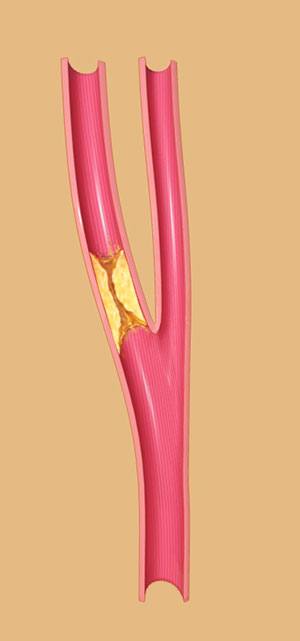Carotid Artery Disease

Carotid arteries are a pair of large blood vessels present on either side of the neck that supply blood to the brain. When these arteries get blocked, it leads to a condition known as carotid artery disease. In this disease, the arteries become narrow due to atherosclerosis in which plaque, made up of cholesterol and calcium, deposits on the inner lining of these arteries causing the arteries to harden and narrow. Due to the presence of plaque the blood flow is restricted and oxygen supply to the brain cells is reduced.
Surgery is the only effective way to treat patients with carotid artery disease. Carotid endarterectomy is the most common treatment for carotid artery disease. The surgery is highly beneficial for people who have already had a stroke, or a transient ischemic attack (TIA). Surgery may also be recommended for individuals with severe narrowing of the carotid arteries without a history of any symptoms. The aim of the surgery is to reduce the risk of stroke by shunting or rerouting the blood flow to the brain. The procedure is performed in a hospital under general or local anaesthesia with intravenous sedation. It is a relatively safe procedure but may be associated with a few complications including bleeding, infection, heart attack, blood clots and brain damage. There is also a minor risk of seizures and stroke.
Carotid angioplasty and stenting (CAS) is an alternative surgical procedure performed in some patients where carotid endarterectomy cannot be performed. This includes patients with a significant risk of death from the procedure such as patients with advanced heart disease and patients with a previous neck surgery. In cancer patients undergoing radiation therapy of the neck, CAS is preferred over carotid endarterectomy.
CAS is a relatively less invasive procedure where a catheter is introduced into an artery through a small incision over the groin and is gradually advanced towards the blockage in the carotid, under fluoroscopic guidance. A tiny balloon is guided to the area of the blockage and inflated to widen the artery and increase blood flow. Carotid angioplasty is often combined with the placement of a stent, a tiny mesh tube, which is left inside the artery. This widens the artery and restores the blood supply to the brain. The stent helps maintain the patency of the artery and prevents it from future narrowing.
Risks and complications of CAS includes infection, serious bleeding due to rupture of artery during catheter manipulation, embolic stroke due to accidental release of plaque fragments during the procedure, blood clots and heart attack. A small risk of seizures and strokes also exists.



